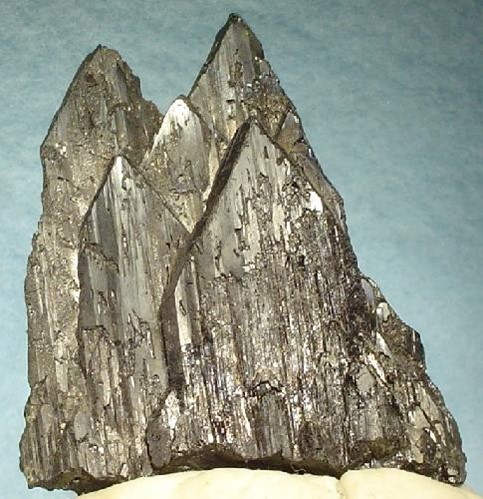
Credit: Rob Lavinsky, iRocks.com, via Wikimedia Commons
Here are two trivia questions for you: What’s the strongest metal on Earth? And why is it called “wolf cream”?
It was discovered in the 1400’s when miners found a hairy black mineral with tin ore. When they smelted the two together, the surface of the melted ore foamed and a heavy slag consumed much of the tin.
They named the mineral “wolf” for its furry appearance and appetite for tin and “rahm” or cream for the foam. Wolfram. In Europe, it’s still called that.
But elsewhere, it has a name given by a Swedish chemist who found it with iron ore. It was much heavier, so he called it “heavy stone.” In Swedish, tung-sten.
After separating the pure metal, he found tungsten was not only a new element but extremely strong.
It’s now used today whenever a highly durable metal is required, especially in its even harder alloy form, tungsten carbide.
You can find it in household items like the ball in a ball point pen.
But it has more exotic uses, in X-ray machines and X-ray resistant aprons. In armor and armor-piercing artillery. In rock drills and tunneling machines. In jet and rocket engines.
It won’t rust or react to acids. It’s 100 times as abrasion resistant as steel, yet it’s easy to recycle.
Tungsten, wolfram, really is a beast of a metal.
Background
Synopsis: Tungsten is such a remarkable element it has two names—its secret identity is wolfram. It is the strongest naturally occurring metal on Earth. It has the highest melting point of all elements and the lowest coefficient of expansion upon heating. It is three times as dense as iron with a specific gravity nearly the same as gold. It is not water soluble, so is exceptionally corrosion resistant. Tungsten is used in many ways because of its many superpowers. But its alloys, like tungsten carbides, are even more powerful—only diamonds can cut them!
- Tungsten has a long history that converged from two directions, leading to its two names.
- In the late Middle Ages (fifteenth century), tin miners in the Erz (Ore) Mountains along the modern border between Germany and Czechoslovakia noticed a new mineral that occurred along with tin ore.
- Where this black hairy-looking mineral coexisted with the tin ore, smelting caused foam to collect on the surface of the molten tin, while heavy slag built up, retaining much of the tin and reducing yields from the ore.
- They imagined the new mineral devouring the tin like a hairy wolf and described the froth as cream (rahm), so they called the offending material wolfram.
- In the 1750’s, Swedish mineralogist Axel Fredrik Cronstedt from the Swedish Bureau of Mines recognized a mineral that was unusually heavy in a Swedish iron mine.
- He named it tung-sten or “heavy stone” in English.
- He was sure the mineral contained a new element.
- In 1781, Swedish chemist Carl Wilhelm Scheele isolated a new acid from the mineral and called it tungstic acid, recognizing the new element.
- In 1783, a metallurgical chemist Juan José D’Elhuyar studied a sample of wolfram from Germany’s Erz Mountains and realized it contained the same unknown element as Scheele’s Swedish tungsten samples.
- He was able to isolate the pure metal by reducing the acid with charcoal and officially named it wolfram, leading to its atomic symbol, W.
- The element is still called wolfram in most European countries, but it is referred to as tungsten in much of the English-speaking world.
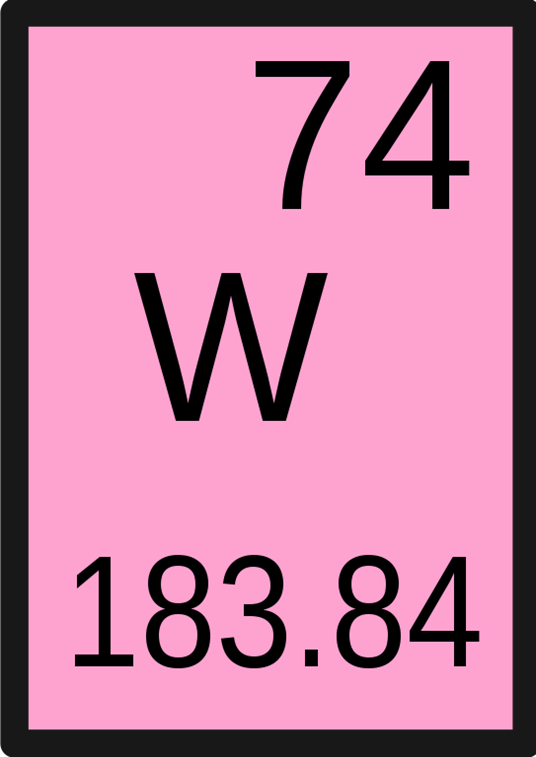
Tungsten, also known as wolfram, is a chemical element that has the symbol W and atomic number 74.
Credit: Albedo-ukr, via Wikimedia Commons
- In the late Middle Ages (fifteenth century), tin miners in the Erz (Ore) Mountains along the modern border between Germany and Czechoslovakia noticed a new mineral that occurred along with tin ore.
- Tungsten doesn’t occur as a pure metal in nature. The world’s most important ores of tungsten are scheelite and wolframite.
- In the 1820’s, scientists named the Swedish calcium tungstate mineral, chemical formual CaWO4, “scheelite” after Carl Scheele.
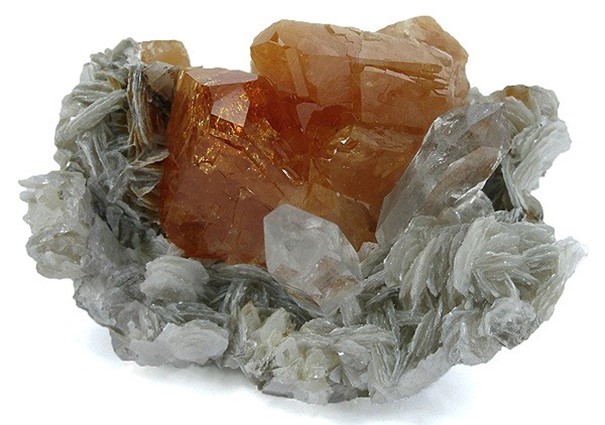
This sample of scheelite in muscovite (mica) is from the Sichuan Province in China. It is about 2.36 inches (6 centimeters) in its largest dimension.
Credit: Rob Lavinsky, iRocks.com, via Wikimedia Commons - The German ore associated with the tin mines is called wolframite, (Fe,Mn)WO4, an iron-manganese tungstate that ranges between two end members: huebnerite, MnWO4, and ferberite, FeWO4.
- In the 1820’s, scientists named the Swedish calcium tungstate mineral, chemical formual CaWO4, “scheelite” after Carl Scheele.
- Tungsten is a steel gray transition metal with extreme physical properties, many of which can be attributed to the exceptional strength and directionality of its metallic bonds.
- There are two forms of tungsten and a very famous group of alloys.
- Polycrystalline tungsten is hard and brittle, making it difficult to work with.
- Pure single crystalline tungsten is more ductile and has a hardness of 7.5, so it can be cut with a hard steel hacksaw.
- Tungsten carbides (WC and W2C) are alloys that combine tungsten with carbon. With a Mohs scale hardness of 9, they are so hard they can only be cut by diamonds (with a maximum hardness of 10).
- Pure tungsten is the strongest naturally occurring metal on Earth, with a tensile strength, or resistance to stretching forces, of 1,510 megapascals.
- Tungsten has the highest melting point of any metal, 6,192°F (3,422°C), and its boiling point is as hot as the sun’s surface (photosphere) at 10,031°F (5,555°C).
- It also has the lowest coefficient of expansion upon heating among metals, similar to borosilicate glass.
- Tungsten is one of the densest metals on Earth, with nearly the same specific gravity as gold, about 19.3 g/cm3. It is nearly twice as dense as lead (11.34 g/cm3).
- Tungsten has high thermal and electrical conductivity.
- Tungsten is not very reactive, which makes it resistant to corrosion, environmentally benign, and efficient to recycle.
- It doesn’t oxidize or rust.
- It doesn’t dissolve in water.
- It doesn’t react in most acid or alkali solutions including nitric, hydrofluoric and sulfuric acids. It does react with hydrochloric acid.
- Inhalation of tungsten dust can be a carcinogenic health hazard.
- Adding small amounts of carbon into the atomic structure of tungsten stabilizes it even further, preventing deformation.
- Tungsten carbide lasts 100 times longer than steel under abrasive conditions, and it is three times as rigid as steel.
- It won’t dent or deform under tremendous force because it has the highest compressive strength of all forged metals.
- There are two forms of tungsten and a very famous group of alloys.
- Tungsten and its alloys have many diverse applications in our modern world.
- Tungsten wire can maintain its shape at very high temperatures, making it ideal for inert gas welding and for filament use in incandescent bulbs (ED-158 Illuminating Incandescent Bulbs), X-ray, electron, cathode and vacuum tube applications.
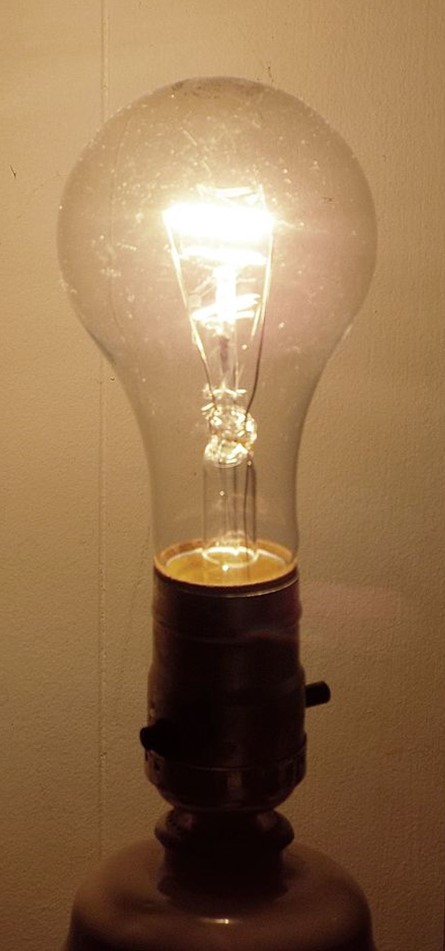
An illuminated 150-watt incandescent light bulb is now a relict of the past because 90% of their energy was produced as heat.
Credit: J. M. Pearson, public domain, via Wikimedia Commons - Tungsten is used in textile dyes, paints and catalysts.
- High-density applications of tungsten include things like flywheel weights and counterweights and as a lead substitute in radiation protection coverings.
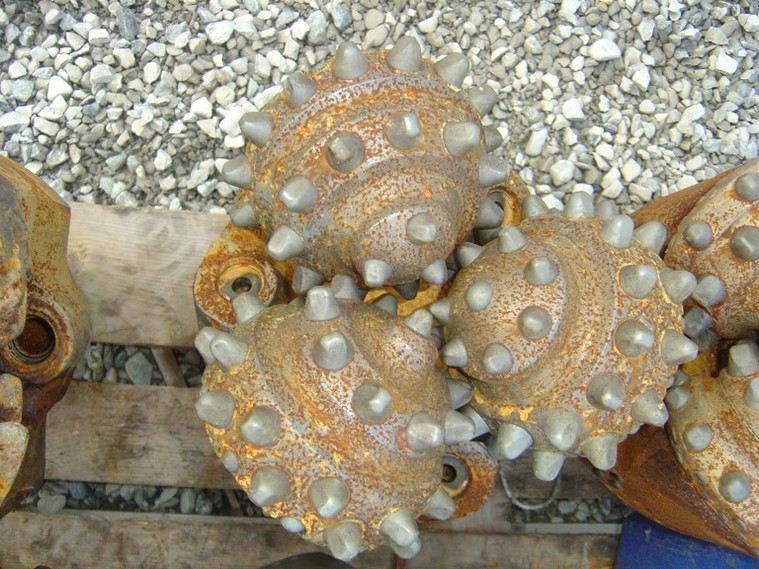
A tricone roller cone drillbit assembly showing the protruding tungsten carbide buttons inset into the rollers
Credit: Dexcel at English Wikipedia, public domain, via Wikimedia Commons - Most tungsten is used to make super tough tungsten carbides and alloys for use in metalworking, mining, construction and drilling equipment.
- Strategic applications like armor-piercing armaments and rocket nozzles make it a strategic mineral for many countries.
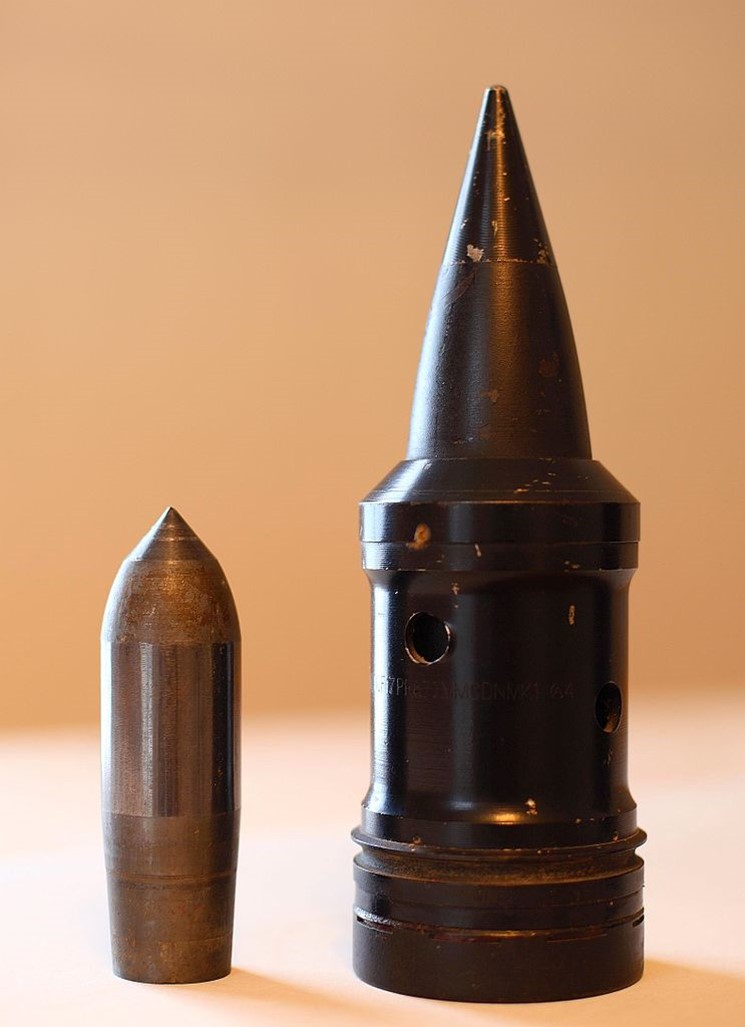
Armor-piercing discarding-sabot tracer round for 17-pounder gun (WW2), with its tungsten carbide core from Canadian Arsenals. Kinetic bombardment uses superdense material like tungsten carbide to breach armor instead of explosives.
Credit: Argonaut9999, via Wikimedia Commons - The tunnel boring machinery that drilled the Channel Tunnel from Britain to Europe used tungsten carbide tips to excavate rock.
- Tungsten superalloys that combine cobalt, iron or nickel with the metal are used in turbine blades in aircraft engines and in rocket engine nozzles.
- Electrons stream from a tungsten emitter tip to make electron microscopes work.
- Welds between glass and metal are typically made with tungsten because of the similarity of the two materials with regard to expansion when exposed to heat.
- The actual ball in a ball point pen may be made of tungsten.
- The vibrator that buzzes your phone uses tungsten.
- Tungsten carbides are often used for jewelry.
- Snowmobile tracks, fishing weights and professional darts are often made of tungsten.
- Tungsten wire can maintain its shape at very high temperatures, making it ideal for inert gas welding and for filament use in incandescent bulbs (ED-158 Illuminating Incandescent Bulbs), X-ray, electron, cathode and vacuum tube applications.
- While tungsten ore is found in fold belts around the world, China controls around 80% of global tungsten mine production, followed by Russia and Canada.
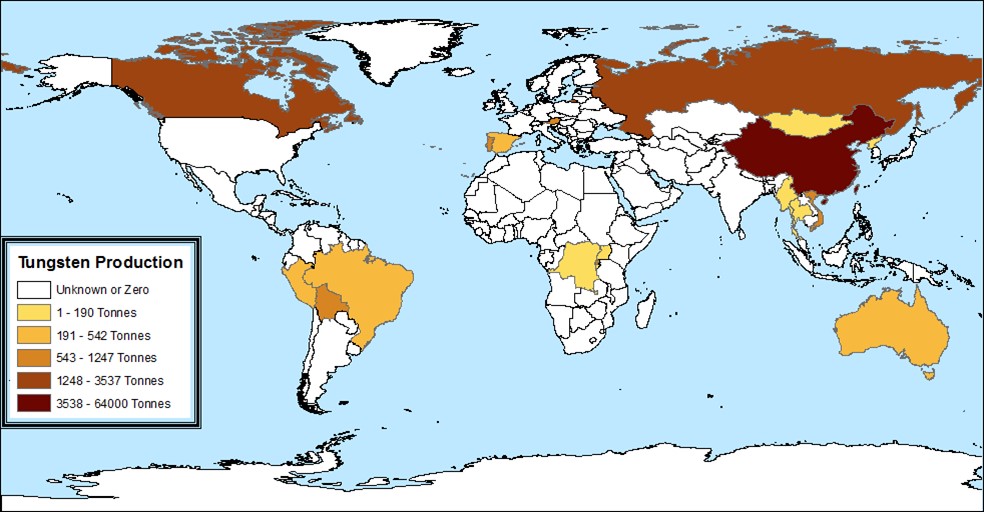
Worldwide amounts of Tungsten produced by country in 2012.
Credit: Wikipedia- Tungsten is efficient to recycle, with 30% of global supply coming from salvage.
- Chinese restrictions on tungsten exports are driving up prices and starting to make global noncommercial deposits economically viable.
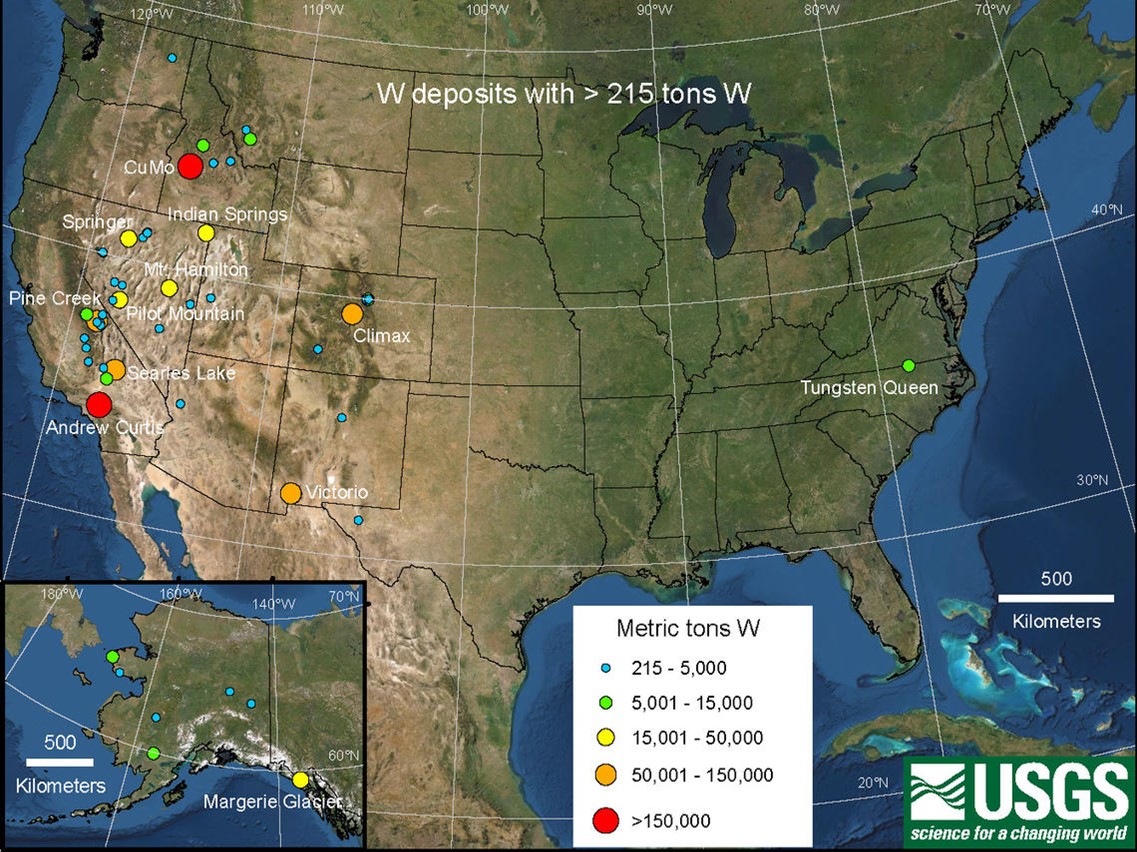
Tungsten deposits in the United States have not been actively mined since 2015, but that may be changing.
Credit: USGS
